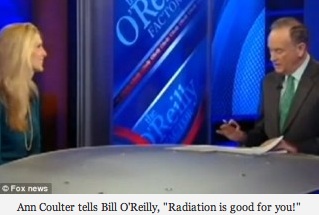MUST-READ!
– Fukushima: Radiation, Politics and Public Relations (Veterans Today, Nov 11, 2012):
by Leuren Moret, Dr. Majia Nadesan and Jim Fetzer (with Major William Fox)
On Friday, 30 March 2012, Dr. Majia Nadesan and Leuren Moret appeared as the featured guests on “The Real Deal” hosted by Jim Fetzer to discuss the radiation effects of the Fukushima disaster and the fashion in which it has been covered up both by the Japanese and by the American governments. Nadesan, PhD., a professor of communication in the Division of Social and Behavioral Sciences in the New College of Interdisciplinary Arts and Sciences at Arizona State University, has studied Fukushima extensively. Moret is an independent geoscientist who has done expert studies on the Fukushima disaster, radiation problems around the world including depleted uranium. What they had to tell us smacks of politics and public relations and is profoundly disturbing. This is Part I of the original interview, which can be heard here:
Introduction by Major William Fox
NOTE: I invited Major William Fox (former USMCR commissioned officer), who was instrumental in arranging this interview to prepare an introduction. His key point is that the first line of defense to handle any major crisis is accurate information. Tragically, not only has accurate information been deliberately withheld from Americans regarding the Fukushima crisis, but they have also been steadily fed disinformation. He continues:
Dr. Majia Nadesan reports in the interview below that on 16 December 2011, The Wall Street Journal wrote that the total radiation dispersed over a broad swath of northern Japan was 15% of what was released from Chernobyl. In contrast, the summary report of the RSMC [Regional Specialized Meteorological Center] Beijing on the Fukushima nuclear accident emergency stated that the total amount of radiation released from Fukushima in the first five days was equal to Chernobyl. In addition, scientists found radio-Xenon levels in the Pacific Northwest at 450,000 times average concentration levels in the weeks following Fukushima — not to mention other dangerous concentrations of radio-nuclides well beyond what any Western Europe countries ever experienced following Chernobyl.
Then we learn from Dr. Nadesan that, “…People in the Pacific Northwest actually inhaled between five and ten hot particles a day in the first month of the disaster — it could take 20 years for cancer to develop or it could take ten years or thirty years. But the significance is that the Western Press in the United States and in Europe as well as in Japan has trivialized the amount of radiation released by using terms like `no acute effects’, `no immediate health effect’…” Dr. Nadesan also comments:
“…If you look at the recently released NRC transcripts, they were projecting the dose to the thyroid of a one year old child, and they had different calculations. But one of their calculations was a thyroid dose of 30 millisieverts just from iodine to the thyroid of a one year old child annualized. And 30 millisieverts is a lot of radiation… clearly there was no effort to make any kind of recommendations to the public to keep their kids inside or to stop drinking milk or dairy, which was found in the wake of Chernobyl to be the primary vector by which small children were exposed to iodine is through milk. And that’s disturbing.”
Read moreFukushima: Radiation, Politics And Public Relations – Part I (Veterans Today)
